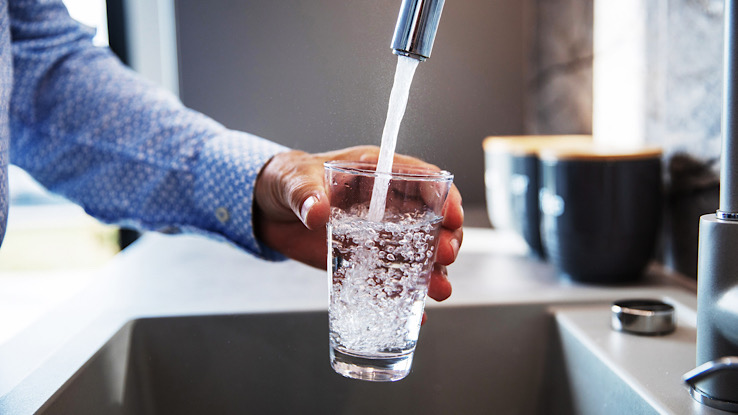Easy to Draw Horse Drinking Water With a Saddle on

People in the U.S. usually take tap water for granted – it's always available in a seemingly endless supply. But there is a lot more to tap water than you might imagine. Here are some of the most exciting facts about drinking tap water.
Although the taste (and even appearance) may make you believe otherwise, the Centers for Disease Control and Prevention (CDC) reports that the U.S. has one of the safest drinking water supply in the world. More than 285 million Americans get their water from a community water system. The U.S. Environmental Protection Agency (EPA) regulates the system, which means it must meet strict safety standards. No matter where you live in the U.S., the tap water supply should be safe according to EPA regulations.
Not All Tap Water Comes From Groundwater
Many people believe that underground water is the only source of local tap water supplies. While groundwater is the source for some areas, many communities get their tap water from surface water, which collects in streams, rivers, lakes, and reservoirs. About 7 in 10 community water system users get tap water from a surface water source. Surface water is always treated first to remove possible contaminants and improve its taste, so it's just as safe to drink as groundwater.
Bottled Water Versus Tap Water
According to the EPA, some of the bottled water you pay a dollar or more for per bottle contains water from a municipal water supply, which is the same source that tap water comes from. These reports estimate that more than 1 in 4 bottled water is similar to tap water.
Tap Water Costs
Getting water straight from the tap is practically free, which can add to some huge savings when choosing tap over bottled water. Drinking the recommended 8 glasses of water daily from your tap costs you about 50 cents per year. If you drank the same amount from bottled water, it would cost up to $1,400 over the year. Next time, save money by bringing your water bottle from home rather than shelling out extra for bottled water.
Tap Water Can Potentially Make You Sick, But It's Unlikely
Even though the EPA closely regulates tap water supplies, there is still the chance that your water supply could become contaminated.
Some of the more common sources of contamination include:
- Sewage releases
- Naturally occurring minerals and chemicals
- Manufacturing processes involving heavy metal cyanide and other harmful substances
- Land use practices such as fertilizers, pesticides, or livestock
- Malfunctioning septic systems or other on-site wastewater treatment
These contaminants can potentially cause those who drink the dirty water to become ill.
Possible health issues from drinking contaminated water include gastrointestinal illness, reproductive problems, or neurological disorders. Infants, young children, pregnant women, and older adults are most susceptible to these health concerns. However, instances of illness resulting from contaminated water are infrequent so drinking from the tap isn't a significant concern in most cases.
Reports On Your Local Tap Water
Every community water supply has to release an annual report on the quality of the local drinking water. This includes information about contaminants in the area and the water's source. If you have any concerns about drinking tap water, check out your local water supply report to see how safe the water is.
The Cost Of Tap Water Is Rising
Although it's still "cheap" by most standards, tap water costs are rising due to the aging infrastructure through which many community water systems operate. There are also increasing costs of complying with health and safety regulations and expanding service areas as people build more homes. Therefore, many homeowners may see their water bills slowly rising. However, even with increased rates, most water and sewer bills tend to cost only about 0.5 percent of household income.
Americans Use More Water Per Day Than Most Countries
The EPA reports that the average American uses about 90 gallons of water a day at home, which averages about 107,000 gallons a year. This is far more than people in other countries. Europeans, for example, use about 53 gallons daily, while a Sub-Saharan citizen uses only 3-5 gallons daily.
Resource Links:
- "Bottle or tap? Toward an integrated approach to water type consumption" via Water Research
- "In vitro bioanalysis of drinking water from source to tap" via Water Research
- "Perception of tap water quality: Assessment of the factors modifying the links between satisfaction and water consumption behavior" via Science of the Total Environment
- "Microplastics in freshwaters and drinking water: Critical review and assessment of data quality via Water Research
Source: https://www.symptomfind.com/nutrition-supplements/everything-you-need-to-know-about-drinking-tap-water?utm_content=params%3Ao%3D740013%26ad%3DdirN%26qo%3DserpIndex&ueid=f9cc6772-5a12-469f-bc7b-f82637e5bbae
0 Response to "Easy to Draw Horse Drinking Water With a Saddle on"
Post a Comment